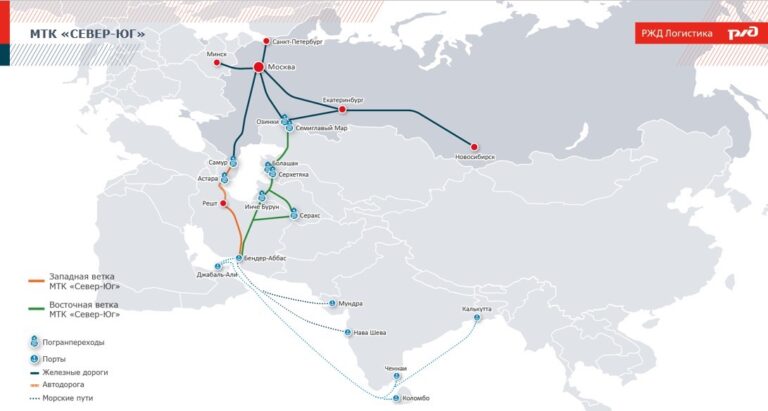
Unleashing India's Potential: The International North-South Transport Corridor Revival and Its Eurasian Gateway
The world of trade and commerce is ever-evolving, and in recent times, one corridor that has garnered significant attention is the International North-South Transport Corridor (INSTC). This ambitious project is poised to revolutionize India’s connectivity with Eurasia, opening up new doors of opportunity and re-energizing the nation’s gateway to the vast and thriving Eurasian market.
The International North-South Transport Corridor, often referred to as the INSTC, is a multimodal network of sea, rail, and road routes that spans over 7,200 kilometers, connecting the Indian Ocean to the Caspian Sea. Stretching from Mumbai in India to the Iranian port of Bandar Abbas, and further extending through Iran, Azerbaijan, and Russia, this corridor presents a strategic and efficient pathway for the seamless movement of goods and commodities.
For centuries, the ancient Silk Road was the lifeline of trade between Asia and Europe. Now, with the resurgence of the INSTC, India is poised to reclaim its historical role as a vital link in this grand tapestry of international trade. By integrating its vast landmass and diverse economic prowess with the INSTC, India can tap into the immense potential of Eurasian markets while providing a faster and more cost-effective route for its exports.
The advantages of the INSTC are multifaceted. First and foremost, it significantly reduces the transportation time and costs for goods moving between India and Eurasia. By bypassing traditional maritime routes and congested transport hubs, exporters and importers can save considerable time and money, enhancing the competitiveness of Indian products in the international market.
Secondly, the INSTC diversifies India’s trade routes, reducing the country’s dependence on traditional maritime passages. Geopolitical uncertainties and maritime security concerns can sometimes disrupt the smooth flow of trade. By having alternative trade corridors like the INSTC, India can ensure a more resilient and reliable trade network, shielding its economy from external shocks.
Furthermore, the INSTC is not just a bilateral initiative; it promotes regional cooperation and strengthens diplomatic ties among participating countries. Collaborative efforts to develop and maintain the corridor foster a sense of partnership and mutual benefit, fostering a conducive environment for further economic collaboration and cultural exchanges.
The development of the INSTC is a testament to India’s commitment to promoting sustainable and eco-friendly transportation. With a substantial portion of the corridor relying on rail and road links, the carbon footprint of goods transportation is significantly reduced. This aligns with India’s international commitments towards climate change and sustainable development.
As we look ahead, the full realization of the potential of the INSTC will require continued investment in infrastructure, streamlined customs procedures, and enhanced logistical capabilities. India, along with its partner nations, must remain steadfast in their efforts to remove any bottlenecks and streamline operations to ensure the corridor operates at its maximum efficiency.
Moreover, public-private partnerships and collaborations with international organizations can further bolster the growth of the INSTC. Engaging with stakeholders from various sectors will ensure that the corridor remains dynamic and adaptable to evolving trade patterns and technological advancements.
In conclusion, the International North-South Transport Corridor holds immense promise for India’s economic future and its aspirations to connect with the vast Eurasian markets. By breathing new life into this ancient route, India stands to re-energize its gateway to Eurasia, tapping into a world of opportunities and becoming a pivotal player in the global trade arena. The success of the INSTC hinges on collective efforts, and as India marches forward in this journey, it solidifies its position as a strategic and influential partner in the realm of international trade and cooperation.